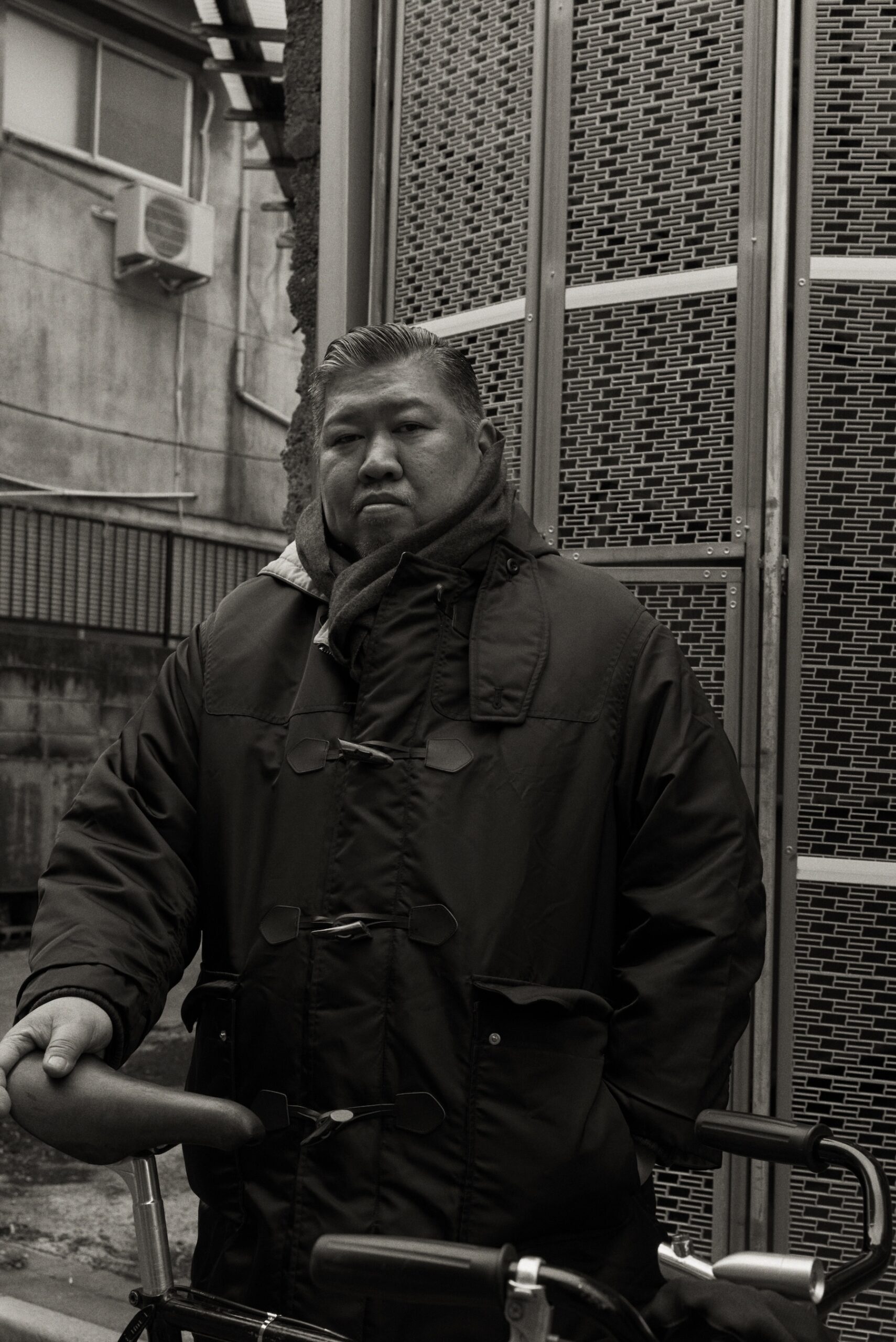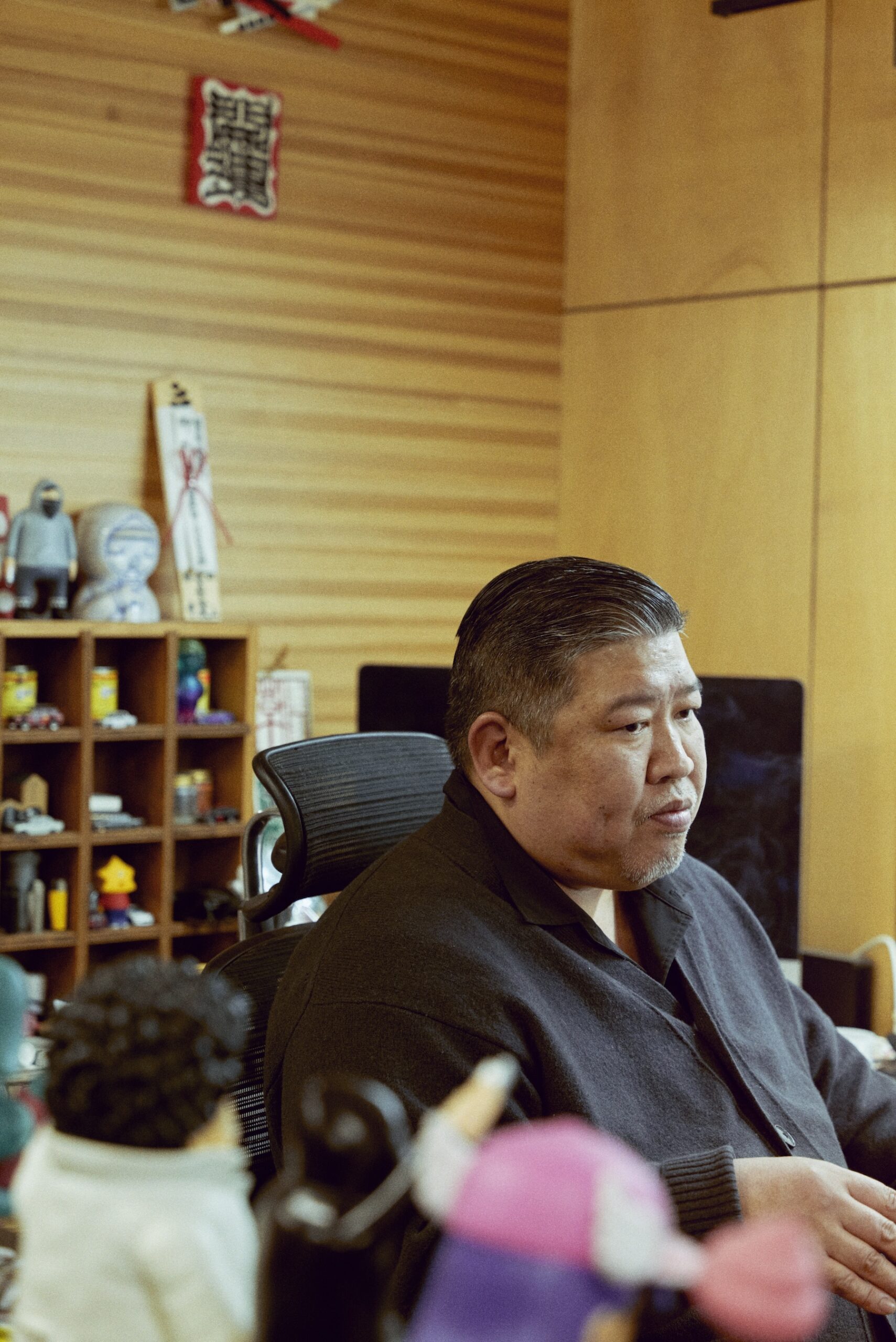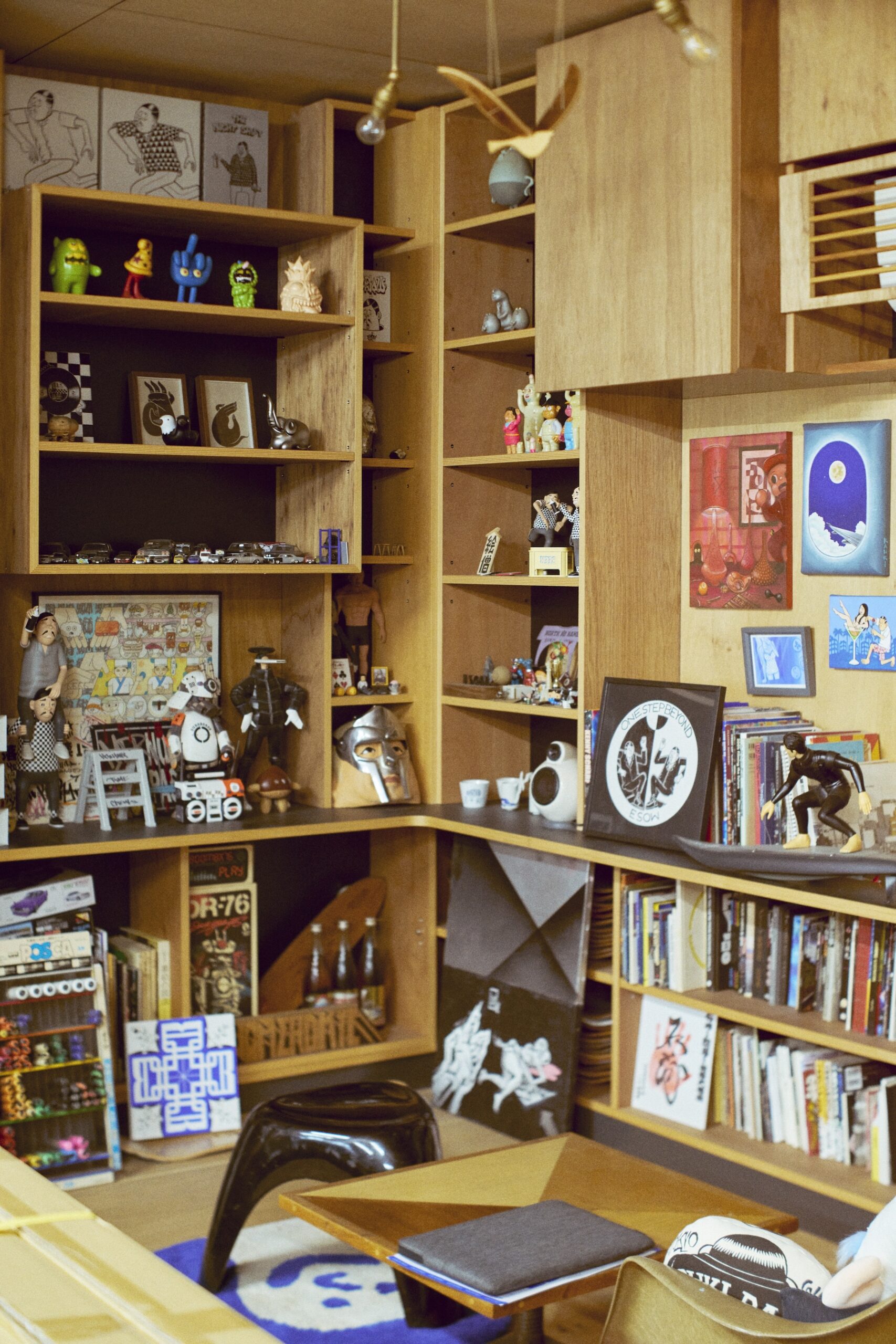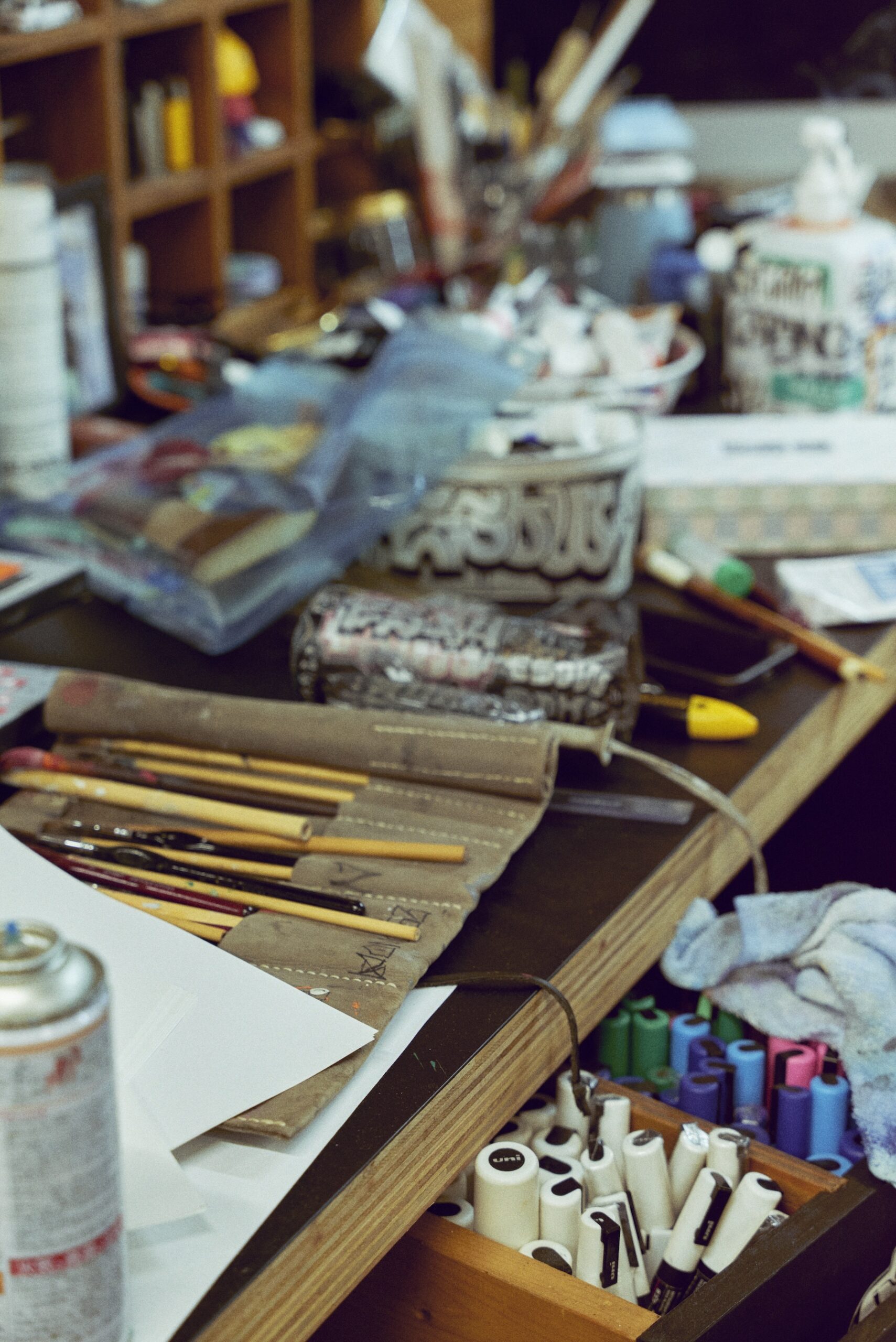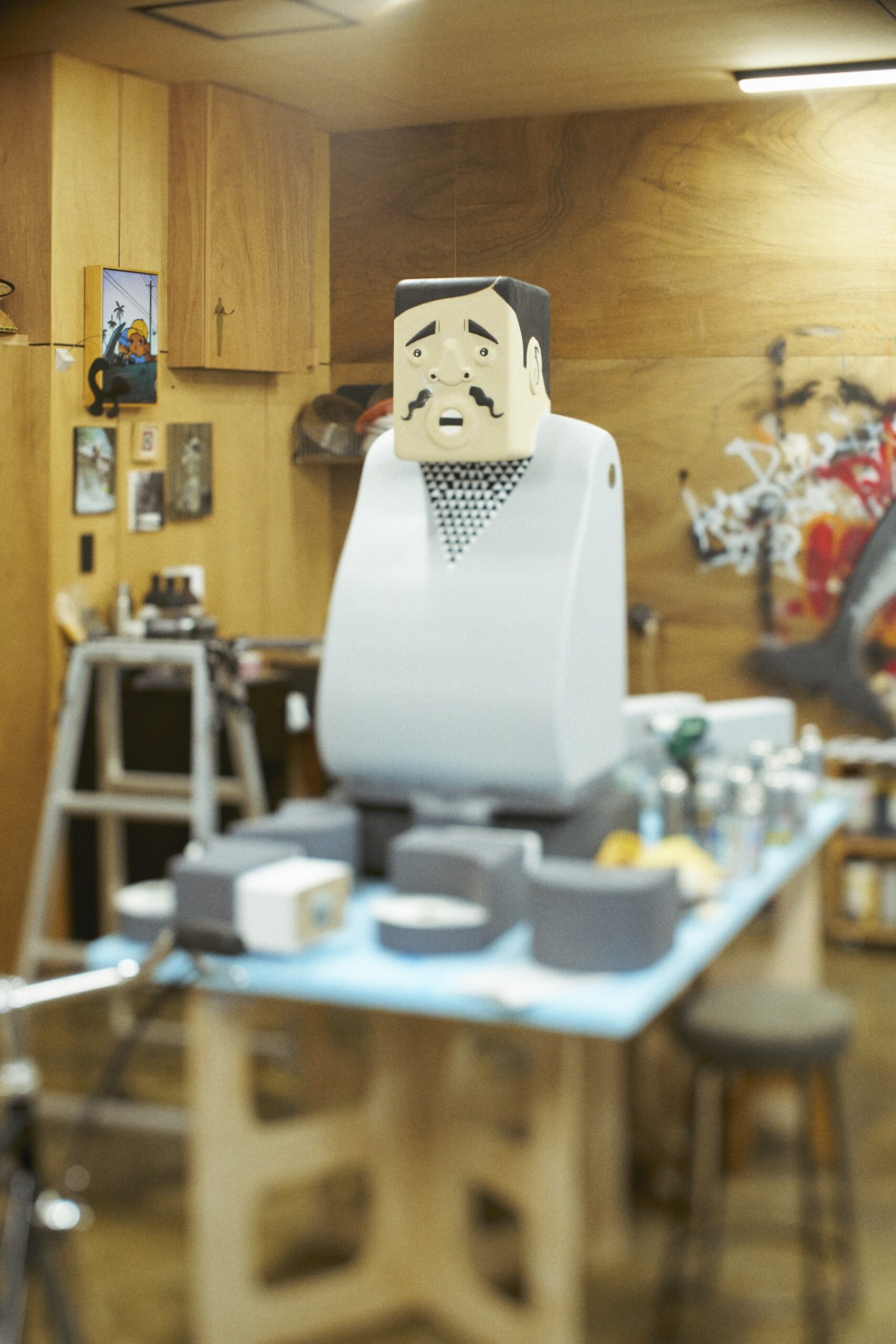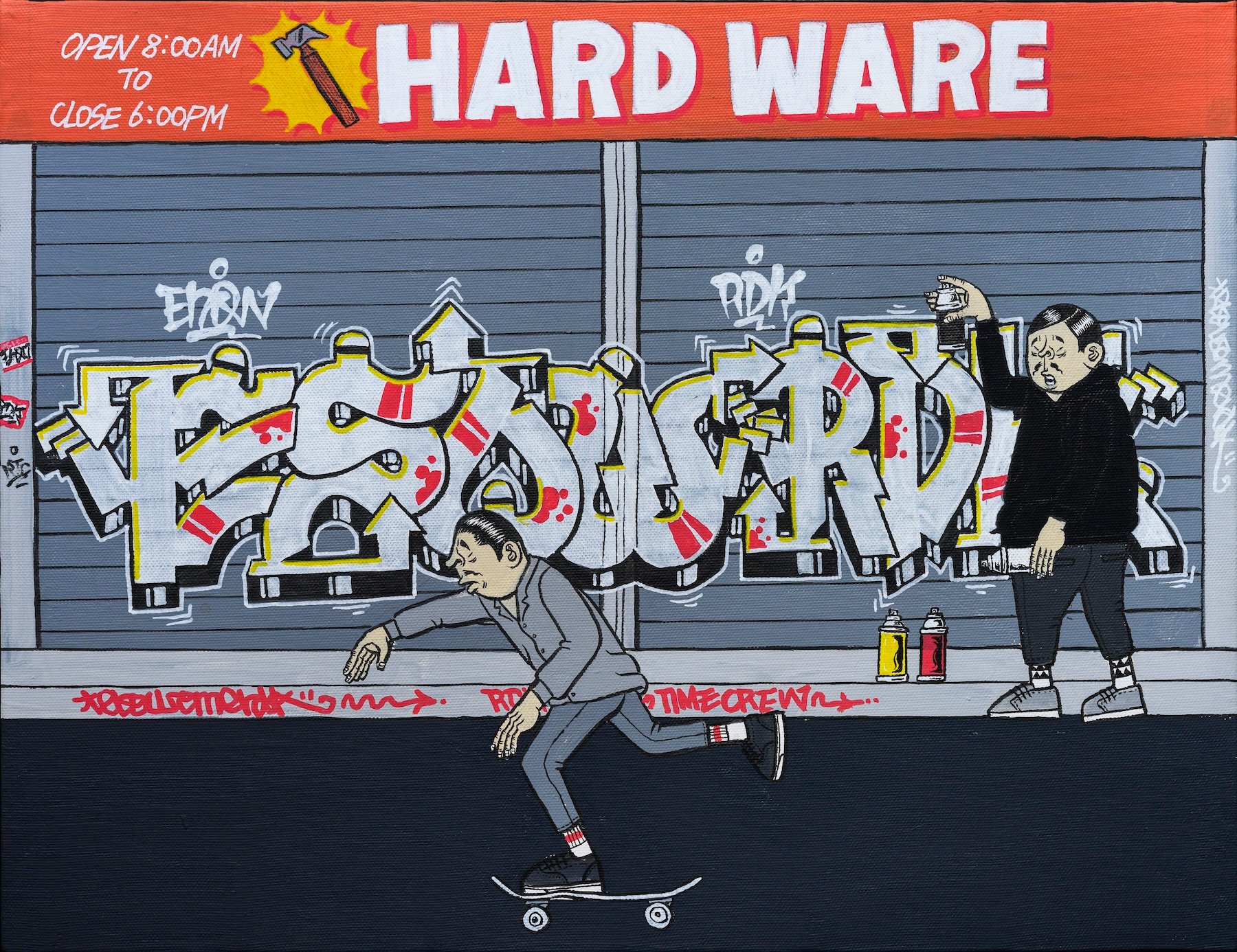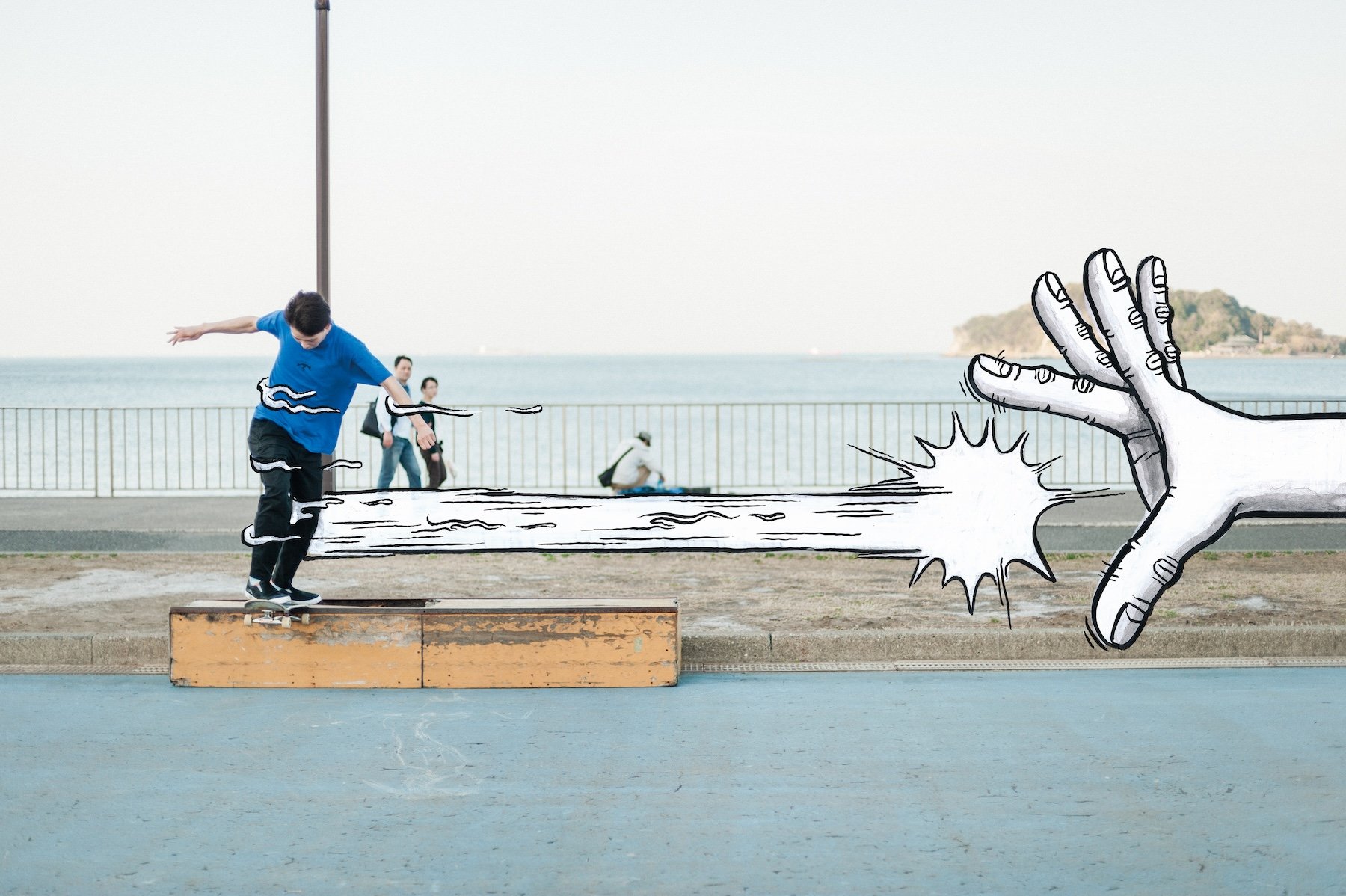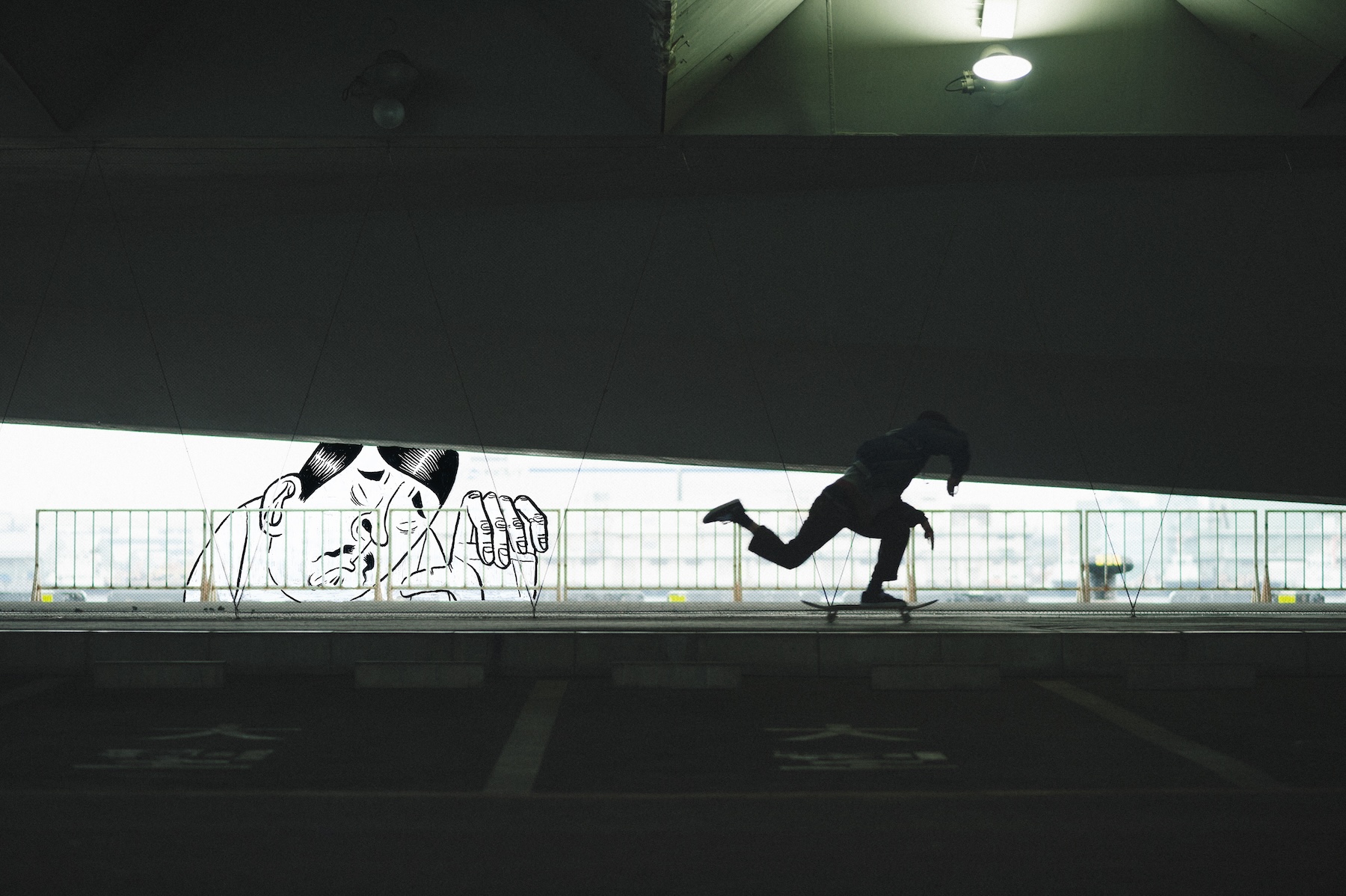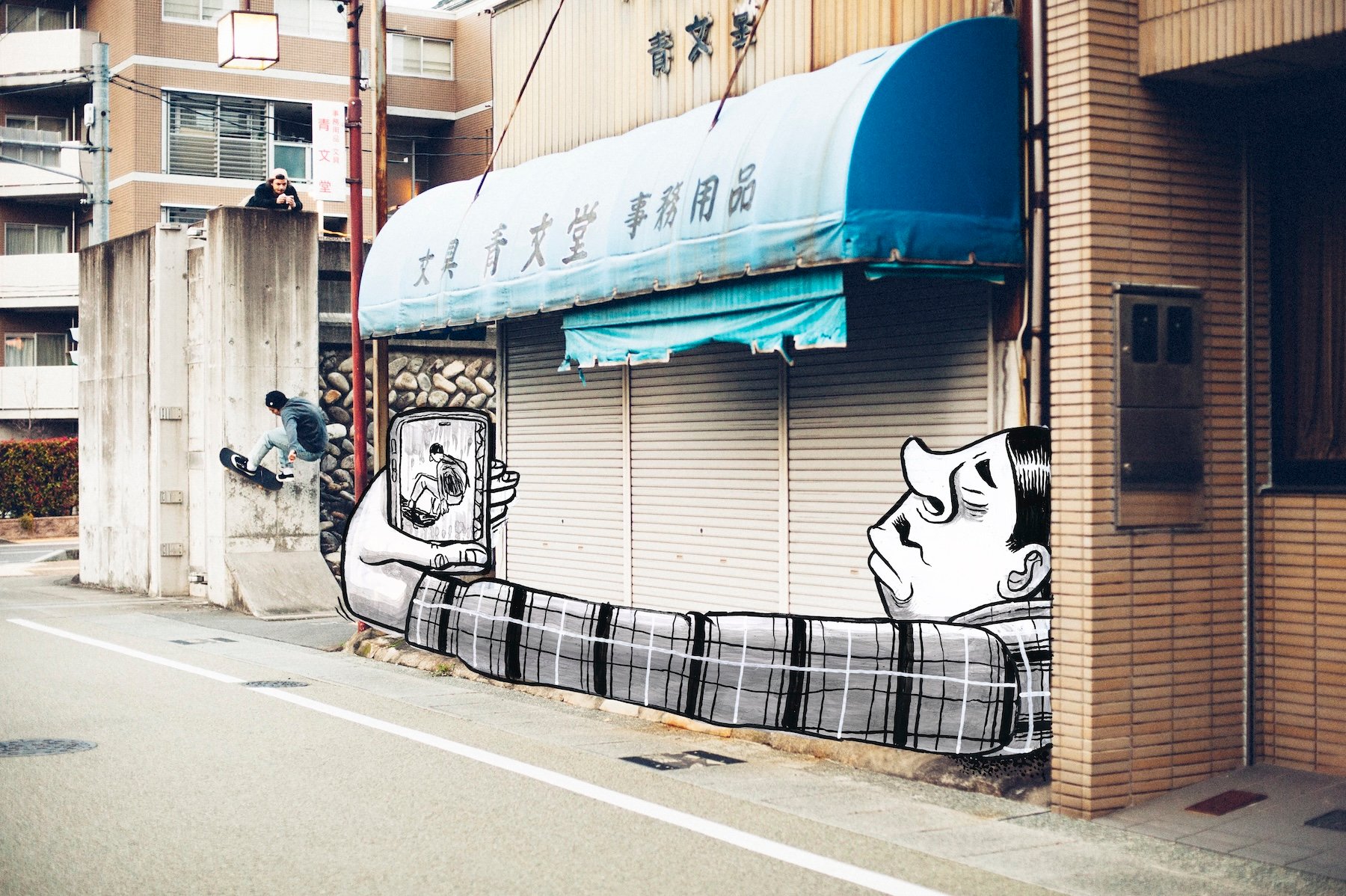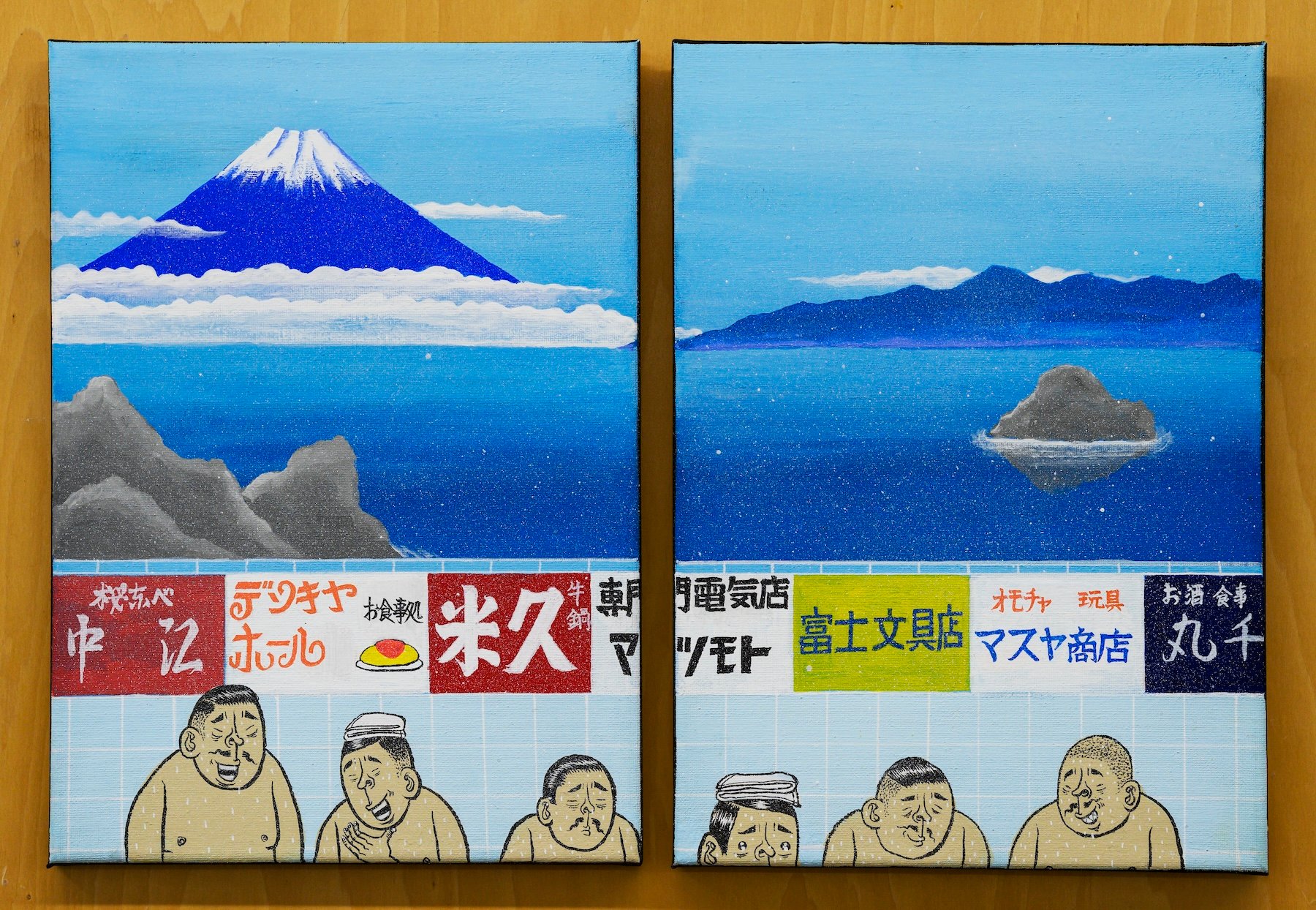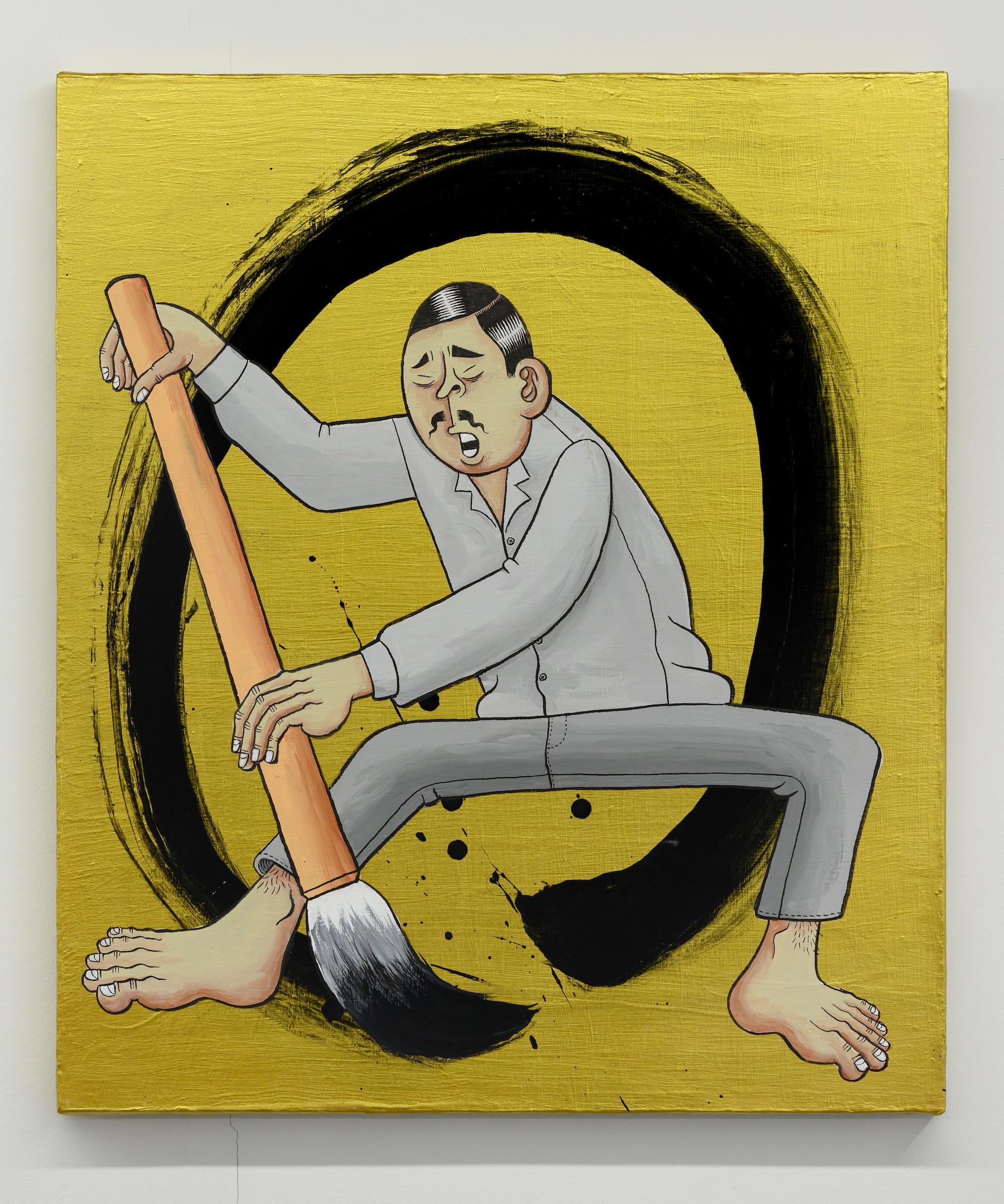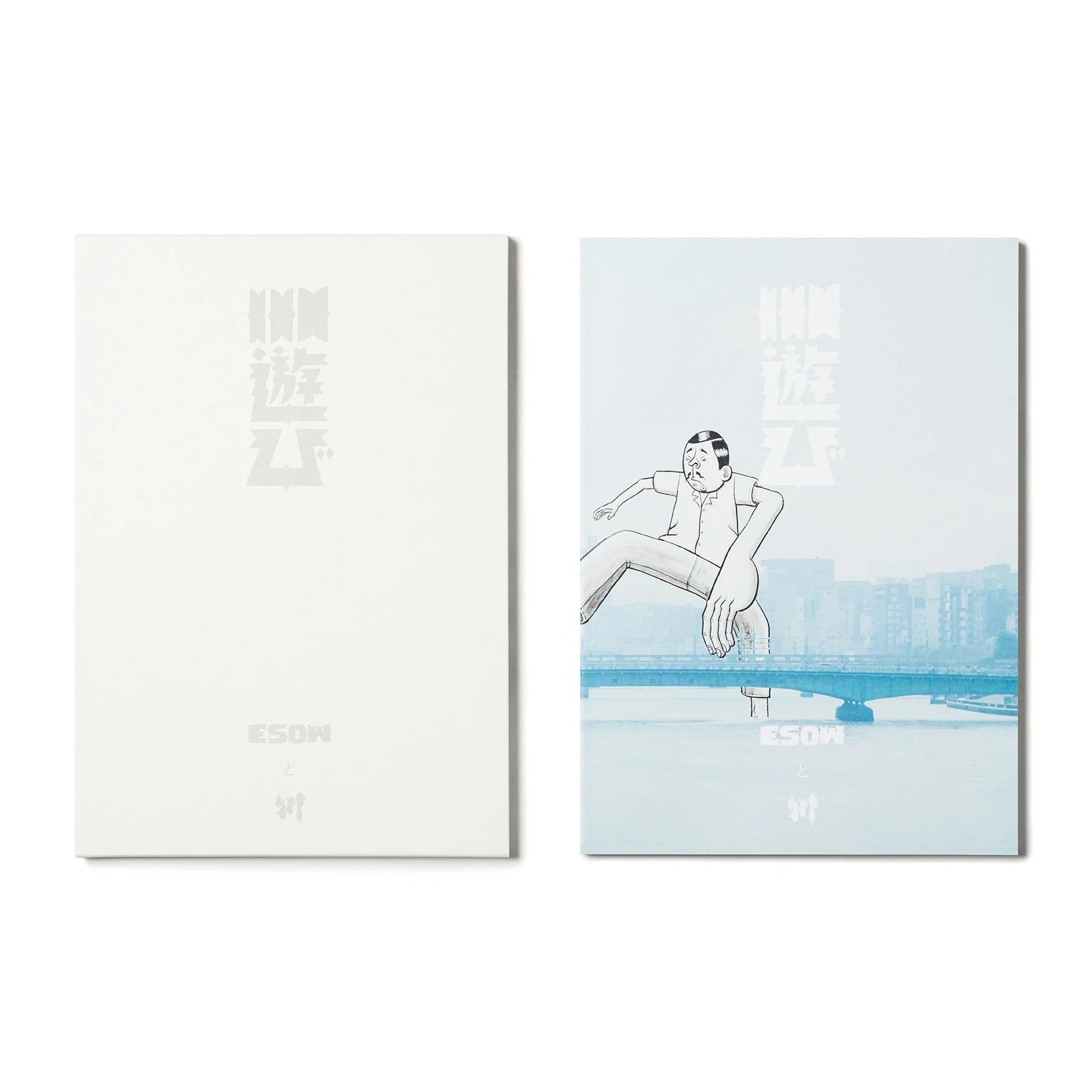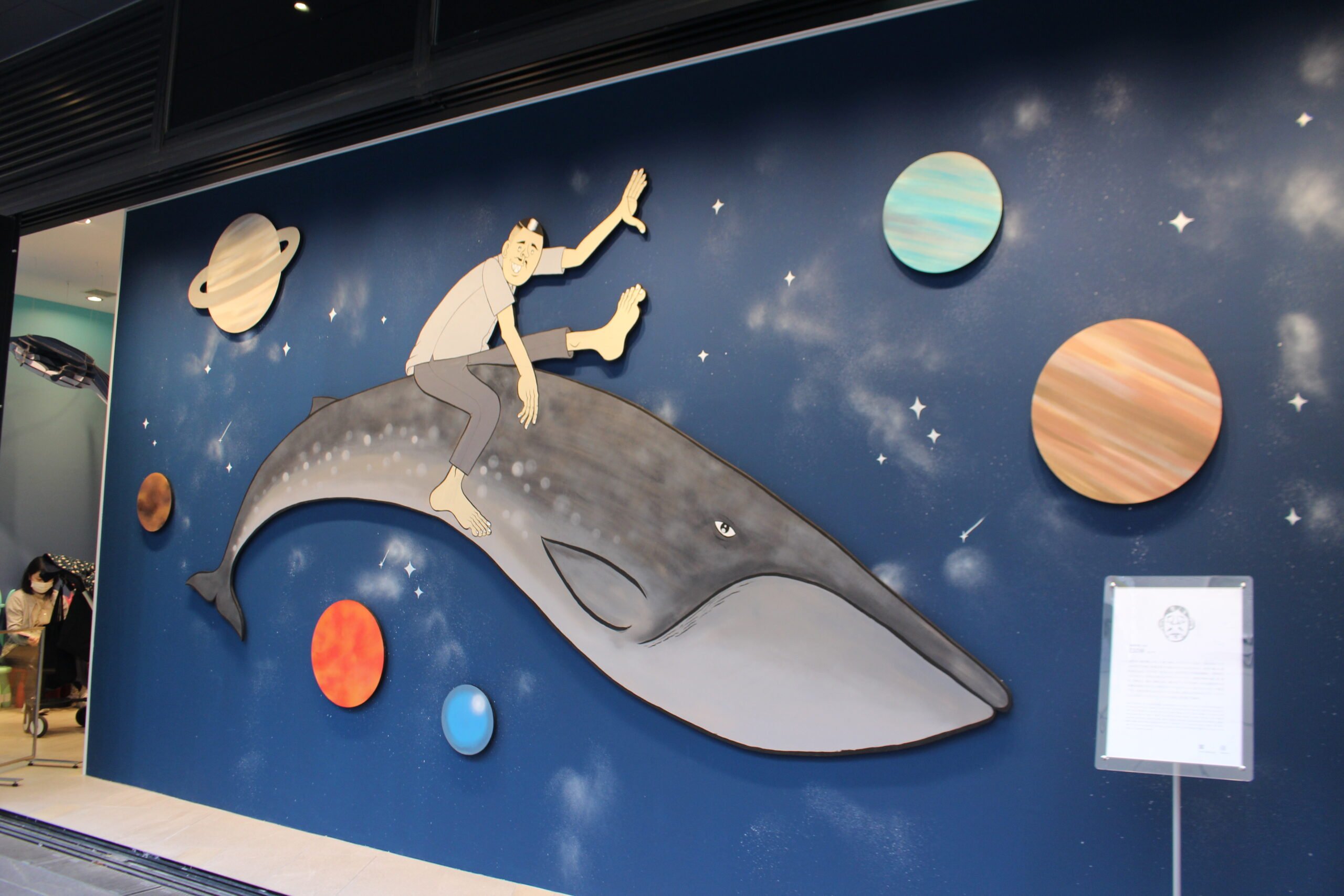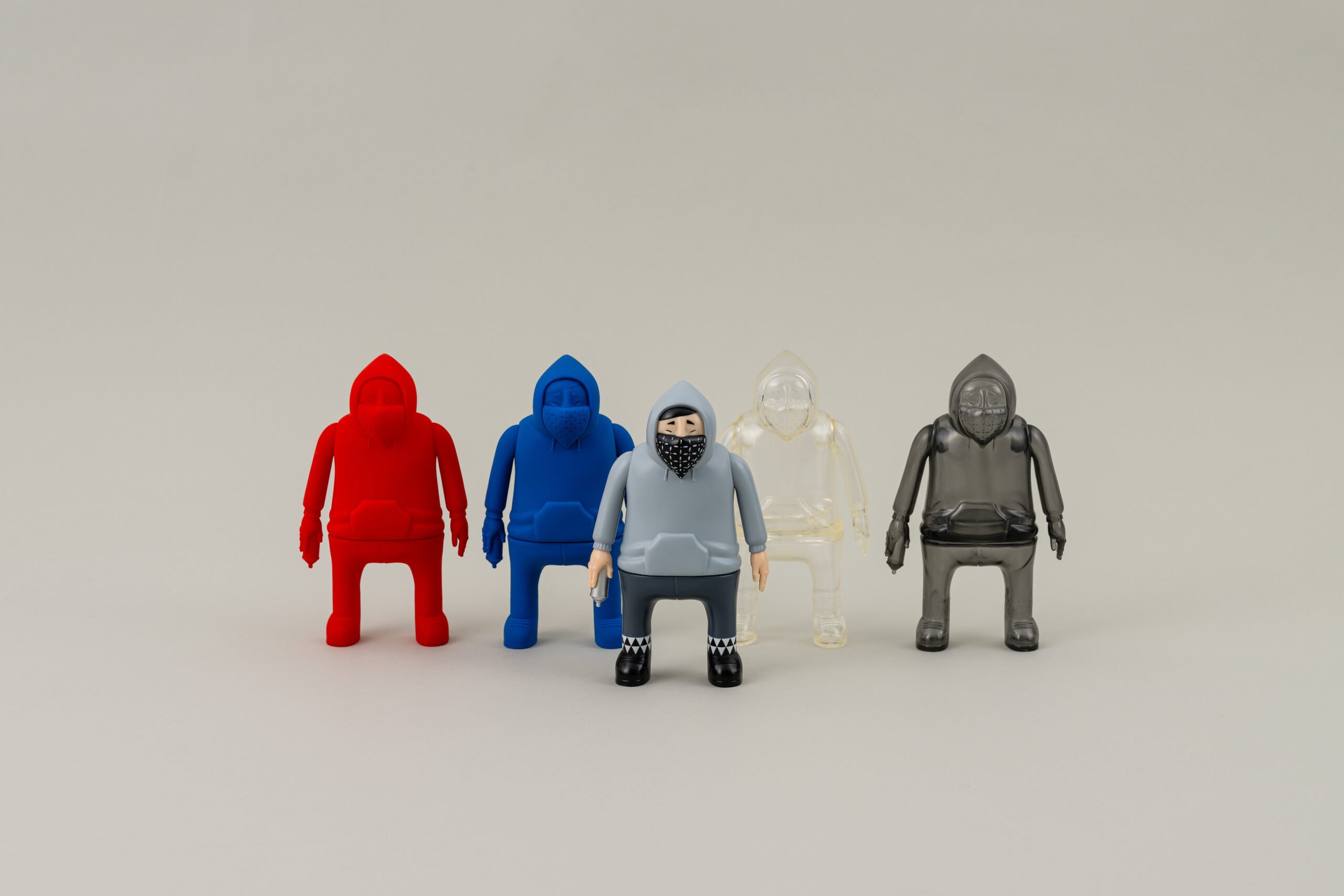CATEGORY
AREA
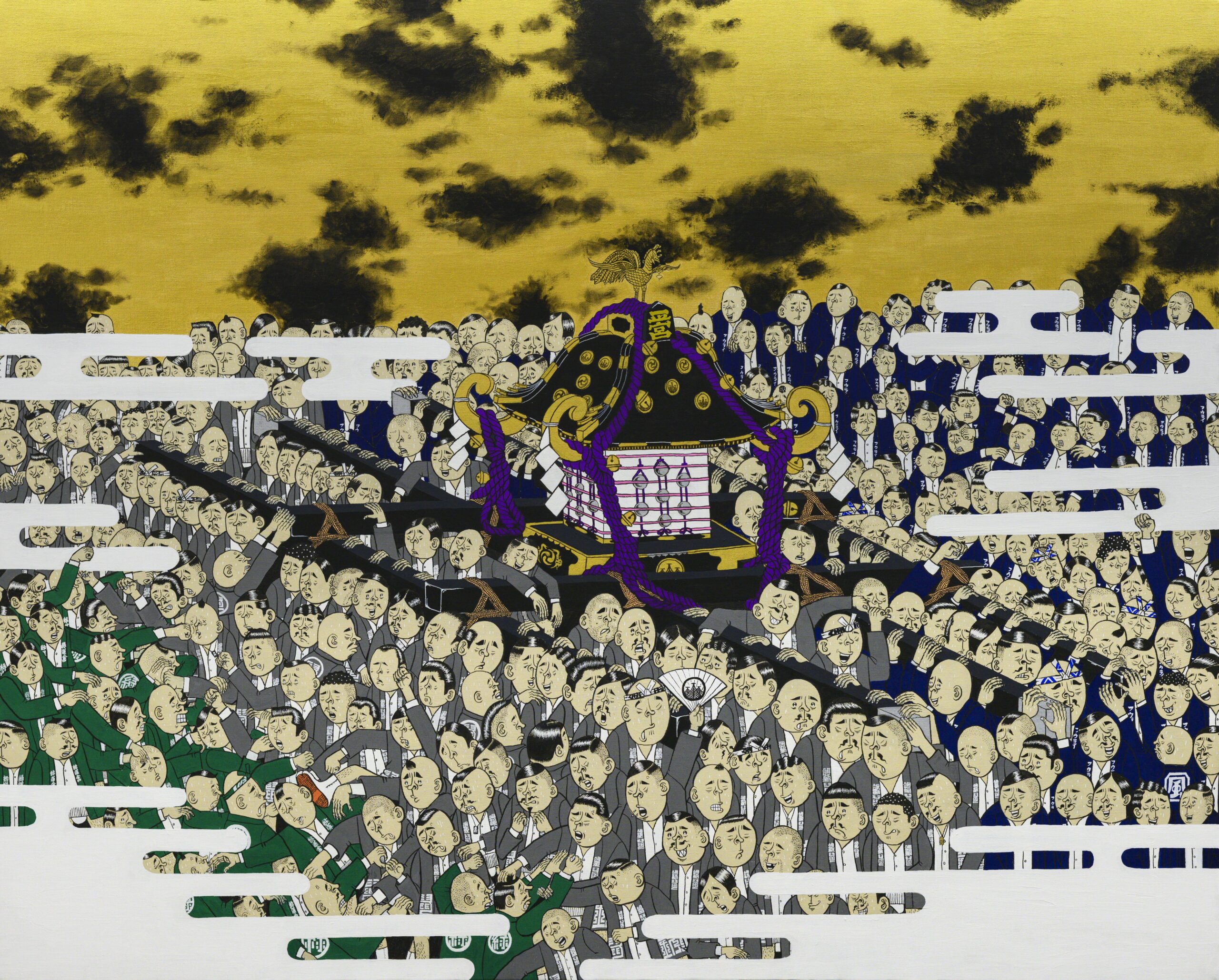
With a background as a member of the legendary skate team "T19," ESOW has been seamlessly blending skate culture and art since the 1990s. His artistic vision draws from Edo-period "Iki" (a refined sense of style and aesthetics), evolving into a unique graffiti style infused with traditional Japanese elements. His distinctive approach has gained international recognition as a unique form of Japanese graffiti art. We spoke with this true Tokyo native about his passion for art.
What initially drew you to skateboarding and street culture?
ESOW
I originally wanted to surf, but surfboards were expensive, so I started with skateboarding instead. As a kid, I got a cheap skateboard from a hardware store and skated with a friend from my neighborhood. Later, I started going to Shonan, where I stayed at the home of the manager of the shop "Hot Buttered" in Shichirigahama while continuing to skateboard and surf. As I became more immersed in skateboarding, I started frequenting "Betty’s," a shop in Kugenuma that imported DOGTOWN decks. Naturally, I was drawn to that culture. At the time, T19’s founding members, O-san and MINO-kun, would often visit the shop, and they became figures I deeply admired
※Dogtown Skateboards: A skate brand founded in Venice Beach, Los Angeles, in 1980, considered one of the pioneers of modern skate culture.) ※O-san and MINO-kun: Founding members of T19, Japan’s first street skate team in the 1990s. The late Hiroshi Otaki, known as O-san, was a professional skater and the team’s founder, while Tatsuya Mino, known as MINO, was also a central figure. ESOW became the fourth member of the team.
Is that how you got involved with T19?
ESOW
No, before that, I wanted to go abroad, so I got a Social Security Number (SSN) and worked part-time at a sushi restaurant in Venice while skateboarding. After about a year, I returned to Japan, then got a student visa and spent two years in Hawaii studying. Back then, I only knew O-san casually. One day, I saw SALUDA and AKIRA holding skateboard decks and asked, "What are those?" They told me, "O-san makes these for us and AKEEM’s, too." That conversation really intrigued me. Later, I ran into O-san in Harajuku and told him, "I’d love to ride one," to which he replied, "Of course, go ahead." That’s how I became the fourth member of T19.
※SALUDA and AKIRA: Members of T19, Masanori Nemoto (SALUDA) and Akira Ozawa (AKIRA). ※Akeem: Akeem the Dream, a T19 skater, also a member of HECTIC, founded by Yoshifumi Egawa, a key figure in 1990s Tokyo street culture.
When did you first encounter graffiti?
ESOW
While in Japan, I was shocked after reading the books "Spraycan Art" and "Subway Art" . Then, when I first went to L.A., I found an abandoned railroad tunnel called "National" near my neighborhood, which had become a graffiti yard. I saw tags by artists like CHAKA and DREX everywhere—not just large murals but even small tags on the edges of phone booths.
*CHAKA, DREX: Graffiti artists based in Los Angeles.
After returning to Japan, you pursued both skateboarding and art?
ESOW
Skateboarding was fun, but making a living from it was tough. Around that time, I became fascinated with the graffiti designs on skate decks and thought, "It’d be great if I could make a living from this." My first paid work was painting murals in the Roppongi club "EROS" and later at a beach house owned by the same club owner. That’s when I realized, "Maybe this could work."
How did you develop your current artistic style?
ESOW
At first, I tried to follow American graffiti styles and rules. But graffiti is an American-born culture, and I realized that merely imitating it wouldn’t fully resonate with me as a Japanese artist. Through trial and error, I became interested in Japanese painting and began incorporating traditional motifs. I love graffiti, but as a Japanese artist, I thought it would be interesting to use kanji and hiragana in my work. I studied the works of Japanese painting masters, especially Maruyama Ōkyo and Sesshū, whose sense of space and "wabi-sabi" aesthetics fascinated me. On the other hand, artists like Kano Tan'yū and the Kano school had highly intricate compositions that I felt were beyond my ability to replicate.
Your iconic characters have a distinctive and memorable design. How did they come about?
ESOW
I’ve always wanted to create characters. I love Shigeru Mizuki’s works and aspired to create something with a similar aesthetic. My characters have a consistent nose and ear shape, with expressions changing only through the eyes and mouth. By keeping some elements fixed, I hoped to make them instantly recognizable as my work.
Your typography is also distinctive, influenced by Edo and Yose-style lettering.
ESOW
I don’t try to replicate Edo-style typography exactly since it follows strict historical rules. For example, Yose lettering is designed to symbolize a packed house at performances, with thick lines and minimal spacing. While I find its cultural background fascinating, I prefer to develop my own approach to lettering.
Your 2025 solo exhibition "Shitamachi Hyakkei" featured detailed works, including a festival mikoshi (portable shrine). What themes did you explore?
ESOW
IESOW: I try to depict everyday life, from local izakayas to neighborhood festivals. This exhibition was an extension of that. Japan’s four seasons bring constant changes in scenery and events—summer festivals and fireworks, winter’s Tori-no-Ichi and New Year celebrations. I love how people always find a reason to gather and drink. Living in downtown Tokyo makes these seasonal shifts feel even more tangible. That might be the real charm of the old town.
Shitamachi Hyakkei" was exhibited at TRINE GALLERY in Kanda, February 2025.
You also create artworks on photographs. Can you tell us about this project?
ESOW
Two photographers, Shinsaku Arakawa and Noriyuki Sekikawa, who are active in skateboard media, formed a unit called "Kawa/kawa." I collaborate with them by painting over their photographs. Their work captures Japan’s shopping streets and rural landscapes rather than the American-style skate spots seen in overseas magazines. I find that uniquely Japanese approach very appealing.
"Kawa Asobi": A collaborative project between ESOW and "Kawa/kawa," started in 2017, featuring artworks painted over photographs.
kawa
WEBSITE: https://kawa-img.com/
What makes Tokyo’s old town skate scene unique?
ESOW
Skating along riverbanks has long been a tradition, with spots like Kanegafuchi. It’s easier to skate there compared to the city center. But lately, more skaters have been using skate parks, causing a shift in the culture.
Any future aspirations?
ESOW
I’d love to legally paint on trains or public bathhouse walls. But more than anything, I just want to keep drawing every day.
A mural in the show window of the renovated UNIQLO Asakusa store in March 2025.
ESOW Sofbi 2. "ZERO MAGAZINE BOOK & MUSIC" (https://zeromagazine.base.shop/(available for sale at the following website).
Graffiti and skateboarding are both American-born cultures, but ESOW believes that Japan has a unique style that can rival anything abroad. In fact, when interviewed 25 years ago, he expressed the same belief. His unchanging philosophy, much like a traditional art form, has grown deeper over time, giving his work greater depth and vitality.
ESOW, born in Tokyo in 1972, started skateboarding at 13 and moved to the U.S. alone at 17. Merging graffiti with his roots in Edo and old Tokyo culture, he developed a unique style. He has long been based in Asakusa and collaborates with various brands both in Japan and internationally.
Instagram: @esowom
shop:: (English) https://esow.shop/
